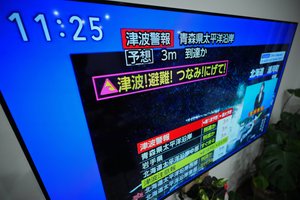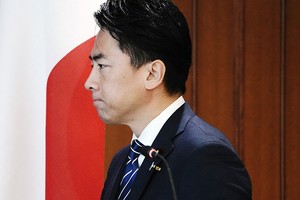THE ASAHI SHIMBUN
August 21, 2023 at 13:25 JST

The approval rating for the Fumio Kishida Cabinet dropped for the third straight month to 33 percent, the second-lowest level since he became prime minister in October 2021, an Asahi Shimbun survey showed.
The figure fell from 37 percent in the previous survey in July, while the disapproval rating rose to 54 percent from 50 percent.
The record low rating for the Kishida Cabinet was 31 percent, set in December.
Seventy-nine percent of voters in the nationwide telephone survey conducted on Aug. 19-20 said the prime minister has not demonstrated leadership in dealing with problems concerning the My Number personal identification system, such as data mix-ups.
Only 13 percent said Kishida has shown leadership over the issue.
The government released an interim report on Aug. 8 in response to Kishida’s call for a comprehensive review of the My Number problems. He told his ministers to inspect all relevant data by November.
The support rate for Kishida’s ruling Liberal Democratic Party was 28 percent, unchanged from the July survey.
It was the first time for the LDP support rate to remain between 20 percent and 30 percent for two consecutive months since May and June in 2020, when Shinzo Abe was prime minister.
Prosecutors on Aug. 4 searched the offices of LDP Lower House member Masatoshi Akimoto on suspicion of receiving bribes from a wind farm operator.
Fifty-two percent of respondents said the image of the Kishida Cabinet remains unchanged after the scandal, while 45 percent said the image worsened.
An LDP lawmaker came under fire for posting on social media what was described as a flippant photo of her and other members of the Women’s Affairs Division of the party. They were posing against the backdrop of the Eiffel Tower during a study trip to France.
A combined 62 percent of voters said the photo was problematic, either “greatly” or “to a certain degree,” while a combined 36 percent said it was not such a big problem or was no problem at all.
The survey was conducted through calls to randomly generated telephone numbers. There were 394 valid responses from voters contacted by fixed telephones, or 46 percent of the total, and 648 responses from those contacted by cellphones, or 40 percent.




















A peek through the music industry’s curtain at the producers who harnessed social media to help their idols go global.
A series based on diplomatic documents declassified by Japan’s Foreign Ministry
Here is a collection of first-hand accounts by “hibakusha” atomic bomb survivors.
Cooking experts, chefs and others involved in the field of food introduce their special recipes intertwined with their paths in life.
A series about Japanese-Americans and their memories of World War II